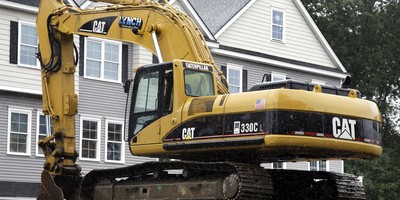The alleged success of the California model is one of the more intense controversies in the nerdier corners of public policy debate.
For many progressives, California's metastasizing liberalism proves you can have Scandinavian-style social policies and tax rates and still have robust economic growth. For conservatives, California is like a bumblebee. On paper, the damn thing shouldn't be able to fly -- and yet it does. Thus the cottage industry on the right of prophesizing California's inevitable demise.
What's always bothered me about the whole argument is how it leaves out important factors. For me, the biggest one was always geography and the climate that comes with it. I live in Washington, D.C., where the winters are cold and wet. We get more freezing rain than snow. The summers are equatorial. August is like one extended scene from "Barton Fink," with everyone pretending not to be drenched in sweat.
If Amazon's Jeff Bezos got off his derriere and rolled out a weather machine, I would gladly spend at least 10 percent of my annual income to have the weather of Santa Monica or Palo Alto. Los Angeles has 284 days a year of sunshine, and California has 840 miles of mostly spectacular coastline. Is it any surprise that people are willing to pay extra for that?
The state also has a lot of beautiful and famous people whom less beautiful, less famous people like to live near.
The point is that California attracts an enormous number of rich people who think it's worth the high taxes, awful traffic and even the threat of tectonic annihilation to live there -- for reasons that literally have nothing to do with the state's liberal policies. Indeed, most of the Californians I know live there despite those policies, not because of them.
Recommended
No offense to South Dakota, but if it adopted the California model of heavy regulation, high taxes and politically correct social engineering, there'd be a caravan of refugees heading to states such as Wyoming and Minnesota. (I suspect South Dakotan pride would keep them from heading to North Dakota.)
Anyway, there's a new data point to inform the debate that hopefully will be more difficult to ignore: California is the poverty capital of America.
The Census Bureau has come up with a new and better way to measure poverty. The standard model doesn't take into account all sorts of factors that matter in the real world -- the overall cost of living, including food, housing prices, utilities, medical care and taxes.
This is just common sense. The median household income in Mississippi is about $41,000 per year. In California it's about $65,000. Does anyone doubt that $41,000 goes a lot further in Biloxi than in Los Angeles?
According to the standard poverty measure, Mississippi ranks first in the nation with a rate of 20.8 percent. California ranks 16th. The Census Bureau's "Supplemental Poverty Measure" places California first in the nation with a poverty rate of 20.4, and Mississippi falls to fifth.
Wealthy liberal Californians can be quite smug about how they can afford their strict land-use policies, draconian environmental regulations and high taxes. And wealthy Californians can afford them -- but poor Californians are paying the price.
California has some of the highest housing costs in the country. Energy costs, according to a Manhattan Institute study, are as much as 50 percent higher than the national average. A million California households spend 10 percent of their income on energy alone.
To be clear, California spends an enormous amount of money fighting poverty. The problem, as Kerry Jackson explains in the winter issue of City Journal, is that California remains stuck in the past. While the rest of the country embraced welfare reforms that emphasized work, California's bloated and heavily unionized welfare bureaucracies -- with nearly 900,000 state and municipal employees -- clung to the old model of relying on policies that encourage dependency, not self-sufficiency.
A cynical interpretation holds that this is a feature, not a bug. Just as California's prison guard unions have fought reforms that might reduce the prison population -- fewer prisoners, fewer prison guard jobs -- California's poverty bureaucrats have a similar incentive. "In order to keep growing its budget, and hence its power, a welfare bureaucracy has an incentive to expand its 'customer' base -- to ensure that the welfare rolls remain full and, ideally, growing," Jackson writes.
But one needn't subscribe to such theories. I have no doubt the Democrats who have a stranglehold on state politics are sincere in their belief that the California model is enlightened. But such delusions may just be another luxury of living in California.

























Join the conversation as a VIP Member